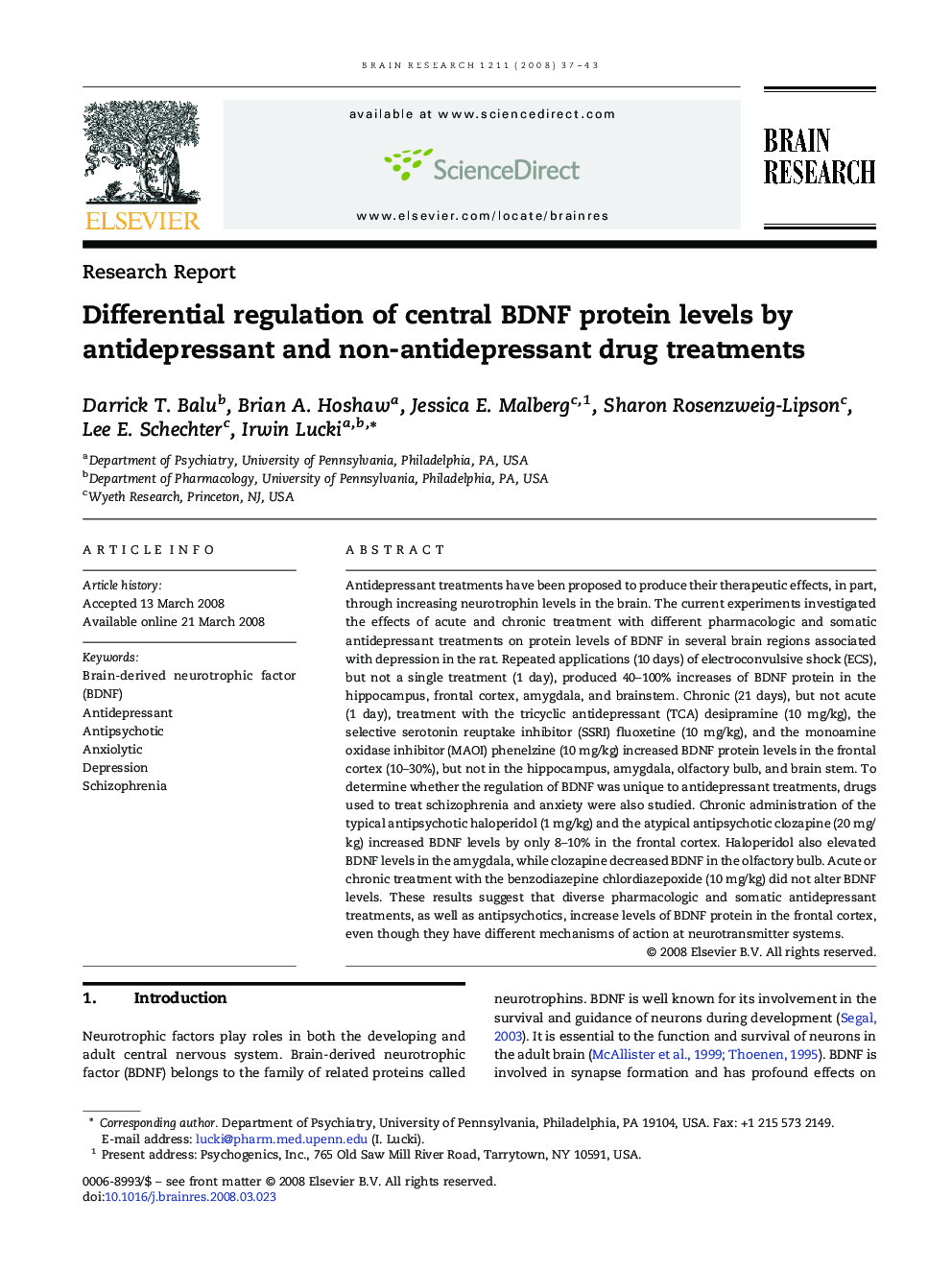| Article ID | Journal | Published Year | Pages | File Type |
|---|---|---|---|---|
| 4329681 | Brain Research | 2008 | 7 Pages |
Abstract
Antidepressant treatments have been proposed to produce their therapeutic effects, in part, through increasing neurotrophin levels in the brain. The current experiments investigated the effects of acute and chronic treatment with different pharmacologic and somatic antidepressant treatments on protein levels of BDNF in several brain regions associated with depression in the rat. Repeated applications (10Â days) of electroconvulsive shock (ECS), but not a single treatment (1Â day), produced 40-100% increases of BDNF protein in the hippocampus, frontal cortex, amygdala, and brainstem. Chronic (21Â days), but not acute (1Â day), treatment with the tricyclic antidepressant (TCA) desipramine (10Â mg/kg), the selective serotonin reuptake inhibitor (SSRI) fluoxetine (10Â mg/kg), and the monoamine oxidase inhibitor (MAOI) phenelzine (10Â mg/kg) increased BDNF protein levels in the frontal cortex (10-30%), but not in the hippocampus, amygdala, olfactory bulb, and brain stem. To determine whether the regulation of BDNF was unique to antidepressant treatments, drugs used to treat schizophrenia and anxiety were also studied. Chronic administration of the typical antipsychotic haloperidol (1Â mg/kg) and the atypical antipsychotic clozapine (20Â mg/kg) increased BDNF levels by only 8-10% in the frontal cortex. Haloperidol also elevated BDNF levels in the amygdala, while clozapine decreased BDNF in the olfactory bulb. Acute or chronic treatment with the benzodiazepine chlordiazepoxide (10Â mg/kg) did not alter BDNF levels. These results suggest that diverse pharmacologic and somatic antidepressant treatments, as well as antipsychotics, increase levels of BDNF protein in the frontal cortex, even though they have different mechanisms of action at neurotransmitter systems.
Keywords
Related Topics
Life Sciences
Neuroscience
Neuroscience (General)
Authors
Darrick T. Balu, Brian A. Hoshaw, Jessica E. Malberg, Sharon Rosenzweig-Lipson, Lee E. Schechter, Irwin Lucki,
